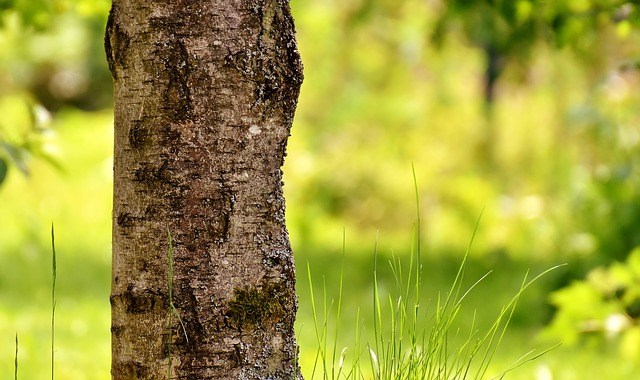1. Eucalyptus
Native to Australia, New Zealand and Tasmania, the rapid growth of the eucalyptus tree is attributed to a survival mechanism which protects young saplings against koalas and other tree munching animals. Free from these indigenous threats, eucalyptus grows swiftly to maturity.
In ideal conditions, larger species will climb 6-8 feet yearly, although some species are slower to expand. Left untrimmed, eucalyptus can be expected to grow to over 65 feet in height. As an evergreen tree, eucalyptus is terrific at giving a year-round burst of lush green to your garden. Again, the root spread of eucalyptus can damage nearby buildings so it is advisable to research carefully before planting.

2. River Birch
River birch is a tough, durable species. It owes its popularity to its inherent stamina and ability to withstand all manner of soils and weather conditions. Because of this, river birch can be seen braving it out in tree pits across London boroughs in the height of summer.
The average annual growth is 3-4 feet and at maturity, this giant stands at an imposing 90 feet, so you’ll need an expanse of garden to accommodate it. As robust as it is, one thing that the river birch needs is water, and plenty of it. During its first few years, it may require as much as 20 gallons per week, although this amount reduces as the tree matures.

3. American Red Maple ‘October Glory’
October glory certainly lives up to its name, producing intense orange and fiery red leaves in fall. Beginning as a pyramidal tree, the red maple extends into a more irregular rounded shape as it matures. It holds on to its leaves until late fall, meaning you get to enjoy an extended color show before the bleak winter sets in. October glory grows 3-5 feet yearly, with fully mature specimens standing 50 feet high and 35 feet wide.

4. Weeping Willow
In optimal conditions, this speedy sapling has the potential to shoot up at an astonishing rate of 6 to 8 feet per year, although a growth of 2-3 feet is a more typical average. Known for its graceful stature, the intertwined branches and sweeping leaves of a willow will give your garden a wistfully romantic feel.
At maturity, weeping willows can grow to an impressive height of 40 feet and span 35 feet in width. Foliage appears as early as February, and the species bears yellow flowers which blossom in April and May. Care must be taken when planting a weeping willow as the roots spread widely and can cause subsidence in nearby buildings.

5. Tulip Poplar
Tulip poplars are stunning showpieces that will dazzle all the way from spring through to fall. Boasting a vibrant yellow and green flower that blossoms in spring, tulip poplars offer some much-needed leafy shade during the scorching summer months before exploding into a crescendo of fluttering golden yellow leaves in fall.
Deliciously fragrant, this tree will attract an eclectic selection of flora and fauna to your garden. Rapid growing and hardy, poplars gain an average of 3-4 feet per year in their youth. In England, tulip poplars have reached dizzying heights of 100ft tall. However, it should be noted that the magnificent blossoms only bloom on mature specimens.

6. Dawn Redwood
This hardy specimen can tolerate most soil and weather conditions, and doesn’t require much to flourish except some wide-open space. Growing at a rate of 2 feet per year, this giant has been known to reach a height of 100 feet tall and 25 feet wide when mature.
The redwood species dates back as far as the prehistoric era but surprisingly, the dawn redwood was known only as a fossil and was believed to be extinct until it was discovered in a remote Chinese province in the 1940’s. After its discovery, it was widely distributed and is now one of the most popular conifers across the world.

7. Italian Cypress
This towering aromatic evergreen works well as a privacy screen or property divider. Architects have also been known to use them to soften exterior corners and edges of houses to blend them better with the surrounding landscape. Unlike most evergreens, Italian cypress do not grow in a pyramidal shape, instead shooting straight up in a narrow columnar style.
Resilient to drought and inclement weather, the only attention they require is pruning, and even that is as effortless as snipping the tree straight across the top at the desired height. Italian cypress trees grow 2-3 feet annually and at maturity they grow as high as 40 feet.

Source: diygarden.co.uk

